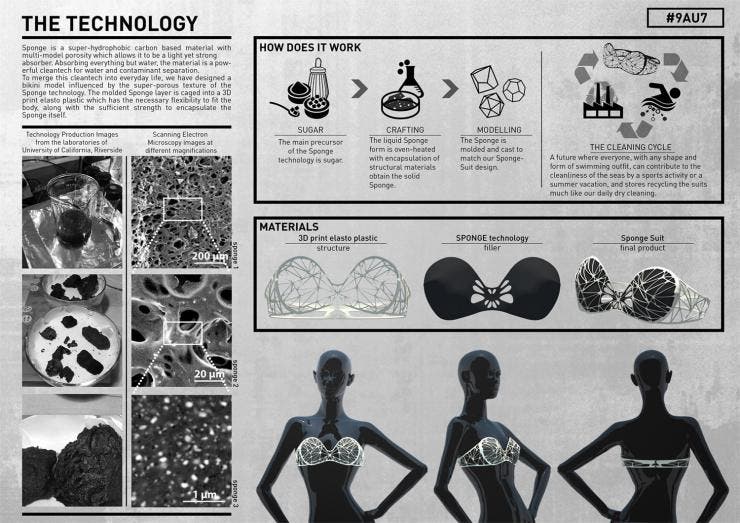The world’s oceans are sadly full of pollution, but now, you can help make a difference – while also looking dashing at the beach. A team of US researchers developed a very 3D printed chic bikini that helps clean up pollution from the water, while posing no risk to yourself.
Mihri Ozkan and her husband, Cengiz, aren’t your average fashion designers. In fact, they’re not fashion designers at all. Dr. Mihri Ozkan is a Professor of Electrical Engineering and a cooperating faculty member in the Bioengineering, Chemistry and Material Science Program at the University of California Riverside, and her main area of research is conceiving of ingenious ways of cleaning up the world’s polluted oceans. Her husband, Cengiz is a Professor of Electrical Engineering with the Bourns College of Engineering at UC Riverside. Together, they designed a re-usable material called Sponge which repels water but attracts and traps contaminants.
Since the contaminants are trapped in the material’s pores, they pose no threat to the wearer. It can absorb up to 25 times its own weight, and it’s cheap to produce.
“This is a super material that is not harmful to the environment and very cost effective to produce,” Ozkan said.
The contaminants are only released when it’s heated to temperatures above 1,000 degrees Celsius (1,832 degrees Fahrenheit), but it’s perfectly recyclable. Basically, you’d swim in it for about 25 times, and then you’d have to replace it if you want it to clean up pollution again – right in time for next year’s fashion trends, I suppose.
“The Sponge itself is highly cost-efficient with the main precursor being sugar. Per gram cost of Sponge is roughly 15 cents, a reducible cost when achieving economies of scale,” the team wrote.
But the Ozkans wanted to take things even further, and they crafted the material into 3D printable swim suit designs; the bikini is based on a strong but flexible elastomer, and the material could be used to design other pieces of swimming suits as well, including caps, wetsuits, or swimming trunks for men. The design won first place at the Reshape 15 Wearable Technology Competition and was recognized at the Maker Faire in Rome on Friday.
“This design can be developed into different outfits: bathing suits, mayokini, swimming caps. Reprogrammability, recyclability and affordability are intriguing properties of the technology, allowing room for further research and development in clean-tech wearable. We aim for a future where everyone, with any shape and form of swimming outfit, can contribute to the cleanliness of the seas by a sports activity or simply a leisurely summer vacation.”
Realistically speaking, you wouldn’t be cleaning up the world’s oceans with them – but it’s this kind of technology that tackles a problem from a new perspective that can make a small difference. We can all play a small part in building a better future for ourselves and the rest of the planet, so why not? Besides, it looks absolutely stunning, don’t you think?










